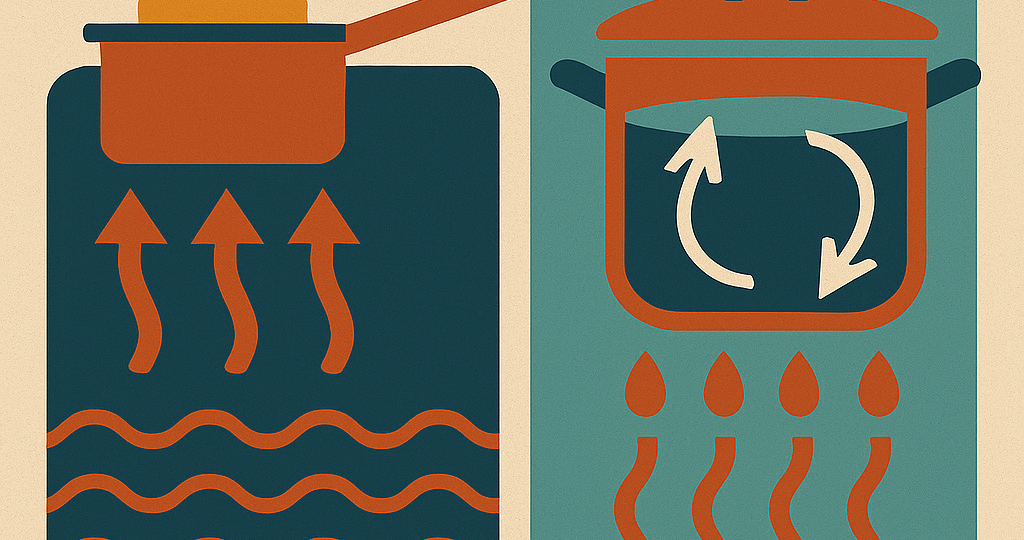
Ever wondered why your hand feels hot immediately when you touch a metal pan on the stove, but takes longer to feel hot air in an oven? That’s because two different types of heat transfer are at work: conduction and convection. Both move heat around, but they do it in very different ways — and understanding them can actually make you a smarter cook!
Conduction is heat transfer through direct contact. When you put a metal pan on a burner, the stove transfers its heat straight into the pan’s surface, and then into the food. It’s like passing heat hand-to-hand. That’s why frying an egg on a pan works so quickly — the heat flows directly from the burner, into the pan, and straight into the egg. Metals are especially good at conducting heat, which is why cookware is made from materials like aluminum or stainless steel.
Convection, on the other hand, involves heat moving through fluids or gases, like air or water. When you use an oven, it’s not the racks or the metal walls that heat your food — it’s the hot air circulating around the inside. That air warms the surface of your lasagna, cake, or pizza, and gradually heats the inside. This method is slower but more even, especially when convection fans in ovens help move the air around more efficiently.
So next time you’re wondering why your toast browns faster in a toaster oven than a regular one, or why soup takes a while to boil on the stove even when the pot’s scorching — think about the difference between direct and indirect heat. Conduction is fast and focused, like frying; convection is gentle and enveloping, like baking. Both are all around you — and now, you’ll notice them every time you step into the kitchen.
RELATED POSTS
View all

